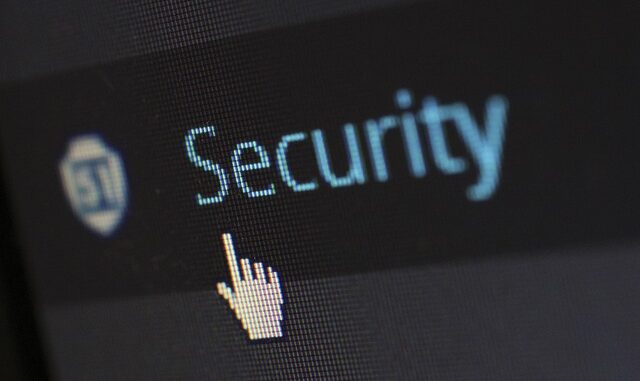
Summary
AT&T reportedly paid a $370,000 ransom after a breach of its Snowflake cloud environment. The breach exposed call and text logs of nearly all AT&T wireless customers. This incident highlights the increasing risks associated with third-party data storage and the importance of robust security measures.
** Main Story**
AT&T’s $370,000 Ransom: A Cybersecurity Breakdown, Or, How Not To Handle a Data Breach
So, AT&T reportedly coughed up $370,000 after someone breached their Snowflake cloud environment. Can you believe it? This wasn’t some small-time operation either; it was a full-blown incident back in April 2024. The breach exposed call and text logs of almost 109 million wireless customers, including folks using Mobile Virtual Network Operators (MVNOs) riding on AT&T’s network. It’s a mess.
They didn’t get the actual text messages or call recordings, luckily. However, all that juicy metadata was exposed: interacting phone numbers, how often they interacted, call lengths, cell site info… the works. Imagine all that data sitting out there, just waiting to be exploited! It spanned from May 2022 to October 2022, with another incident on January 2, 2023. Talk about a headache for their privacy teams. A data breach of this scale really puts things into perspective, doesn’t it?
The Nitty-Gritty: Breach and Ransom
The root cause? Compromised credentials within AT&T’s Snowflake setup. Reports say the ShinyHunters hacking group, supposedly working with this guy, John Erin Binns, was behind it all. Binns, and this is where it gets interesting, was involved in that T-Mobile data breach back in 2021. Talk about a resume! Apparently, he shared the stolen AT&T data with ShinyHunters.
Binns was chilling in Turkey back in May 2024 when they detained him because of the T-Mobile thing. Regardless, a ShinyHunters member allegedly snagged the ransom from AT&T. The hackers initially wanted $1 million, however, they settled for $370,000 in Bitcoin. They even sent over a video showing the data getting deleted. Now that’s what I call customer service… for criminals. But does paying ransoms really work? Some experts would argue that it only encourages more of this behavior, and, honestly, I tend to agree. On the other hand, what would you do if your company was on the line?
Snowflake Under the Microscope
The AT&T incident was just a piece of a bigger problem, apparently. This same group targeted over 165 organizations using Snowflake. It turns out a lot of these accounts didn’t have multi-factor authentication (MFA) enabled. It was like leaving the front door wide open! The hackers used stolen credentials, often from old infostealer infections. Because people were’t rotating their passwords, they had a free pass. I remember one time I forgot to enable MFA on one of my accounts, thankfully nothing happened. However, I learned my lesson.
All this exposed serious weaknesses in cloud security. Moreover, it showed just how important good IAM practices are. Snowflake’s reputation took a hit, no doubt. It emphasized that cloud security is a team effort: both the provider and the client have a role to play in keeping data safe. This campaign’s widespread impact is what led to it being considered one of the biggest data breaches of 2024, which, in turn, turned the scrutiny on data security up to eleven.
The Fallout and What We Can Learn
The AT&T breach led to a Federal Communications Commission (FCC) investigation into how AT&T protects data. They ended up with a $13 million settlement and a consent decree. This mandated tougher data governance and vendor oversight. It’s a reminder that we can’t afford to be complacent, and it’s not just about avoiding fines, it’s about protecting people’s data.
Key Takeaways:
-
MFA is non-negotiable. Without it, you’re basically inviting trouble.
-
Vet your vendors. Know who you’re trusting with your data.
-
Ransomware is a gamble. Paying might seem like a quick fix, but it could backfire.
-
IAM matters. Keep those passwords rotating and limit access where you can.
-
Cloud security is a shared game. Don’t assume your provider is handling everything; do your part.
The AT&T breach? It’s a cautionary tale for everyone, regardless of industry. We’ve got to prioritize cybersecurity and be proactive about data protection. I mean, the cyber threats are only getting more sophisticated, aren’t they? As of March 14, 2025, the AT&T breach remains a textbook case, highlighting the constant battle we’re fighting against cybercrime.


$370,000 in Bitcoin! That’s almost enough to buy a well-seasoned, plant-based foam insulated house made of recycled steel with hempcrete 3D printed hobbit doors! Maybe AT&T should invest in that instead of paying ransoms. At least it’d be a *sustainable* security measure.
That’s a creative perspective! A sustainable security measure like a hempcrete hobbit house sounds far more appealing than lining criminal pockets. It definitely sparks a discussion about innovative and ethical approaches to data security investments. Perhaps more companies should consider thinking outside the box!
Editor: StorageTech.News
Thank you to our Sponsor Esdebe
The compromised credentials highlight the critical need for robust Identity and Access Management (IAM) practices. Beyond multi-factor authentication, continuous monitoring of user activity and privileged access controls are essential to detect and prevent unauthorized data access.
Great point! The compromised credentials really do underscore the importance of IAM. Continuous monitoring is key, as you mentioned. What specific tools or strategies have you found most effective for user activity monitoring in cloud environments?
Editor: StorageTech.News
Thank you to our Sponsor Esdebe
So, AT&T paid criminals $370k, which is approximately the cost of 370,000 one-dollar menu cheeseburgers. I wonder if a double cheeseburger firewall would have been a more effective solution? Or perhaps just a very large pile of cheeseburgers guarding the servers?